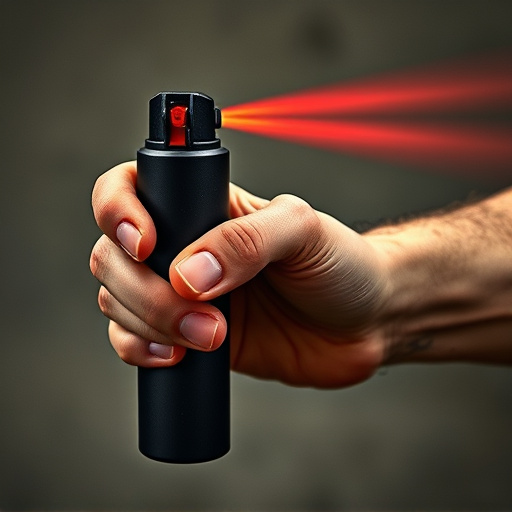Pepper spray, a potent tool for defense and riot control, relies on capsaicin from chili peppers to temporarily incapacitate assailants. Effective pepper spray defense training involves understanding its composition, range, and application techniques—like targeting the eyes and face—while minimizing risks. It's crucial for officers to learn de-escalation tactics, wear protective gear, and practice regular drills for swift and accurate deployment during civil disturbances. These training tips are essential for personal safety, especially in high-pressure situations like riots, ensuring maximum effectiveness with minimal risk.
“In the realm of public safety, pepper spray stands as a powerful tool in riot control, offering a strategic edge during chaotic situations. This article delves into the world of inflammatory sprays, exploring their composition and immediate effects. We uncover effective deployment strategies for law enforcement, providing insights on when and how to utilize pepper spray. Additionally, we offer valuable defense training tips for individuals seeking to master pepper spray techniques for personal safety, ensuring a comprehensive understanding of this game-changer in self-defense.”
- Understanding Pepper Spray: Its Composition and Effects
- Riot Control Strategies: When and How to Deploy Pepper Spray
- Defense Training Tips: Mastering Pepper Spray for Personal Safety
Understanding Pepper Spray: Its Composition and Effects
Pepper spray, a common tool in riot control and defense training tips, is a chemical agent designed to disrupt an individual’s vision, breathing, and overall mobility. Its active ingredient, capsaicin, is derived from chili peppers, making it a natural yet potent irritant. This compound stimulates nerve endings, causing a burning sensation and temporary blindness, enabling those in law enforcement or at-risk individuals to subdue and control assailants.
The effects of pepper spray are rapid but transient, wearing off after a few minutes. However, its impact can be severe during that time, allowing users to gain the upper hand in potentially dangerous situations. Proper training is essential when utilizing pepper spray for defense, ensuring individuals understand its composition, how it works, and safe application techniques to maximize its effectiveness while minimizing risks.
Riot Control Strategies: When and How to Deploy Pepper Spray
In the arsenal of riot control strategies, pepper spray stands out as a powerful yet precise tool for law enforcement and security personnel. When faced with large crowds or situations escalating into violence, deploying pepper spray can effectively disrupt and disperse rioters. It’s crucial to note that its use should be a last resort, after other de-escalation tactics have been exhausted, to ensure public safety and minimize collateral damage.
Training is paramount for handling pepper spray effectively. Pepper spray defense training tips include understanding the spray’s range, wind dynamics, and the need for protective gear. Officers must learn proper application techniques, such as aiming at the eyes and face, where it’s most effective. Regular drills and simulations help prepare personnel to respond swiftly and accurately in high-pressure situations, ensuring both the safety of the officers and the community during civil disturbances.
Defense Training Tips: Mastering Pepper Spray for Personal Safety
Pepper spray, a powerful tool for self-defense, has become an essential addition to personal safety strategies. Mastering its use requires dedicated training and practice, especially in riot control scenarios. Effective pepper spray defense training tips involve learning proper application techniques, understanding range and duration, and practicing in simulated high-pressure environments.
During training, individuals should focus on aiming for the eyes and face, as these areas are most vulnerable. Practice different grip styles to ensure ease of use in stressful situations. Additionally, understanding de-escalation tactics is crucial; trained users can employ calm communication to reduce tensions before deploying pepper spray, minimizing collateral damage and ensuring its effectiveness in riot control scenarios.
Pepper spray, a powerful tool in riot control and personal defense, has established itself as an essential component of safety strategies. Understanding its composition and effects, coupled with effective deployment techniques and rigorous training, empowers individuals and law enforcement to navigate challenging situations. By mastering pepper spray defense training tips, users can ensure their safety and contribute to the peaceful resolution of conflicts, making it a valuable asset in today’s diverse and dynamic landscape.
